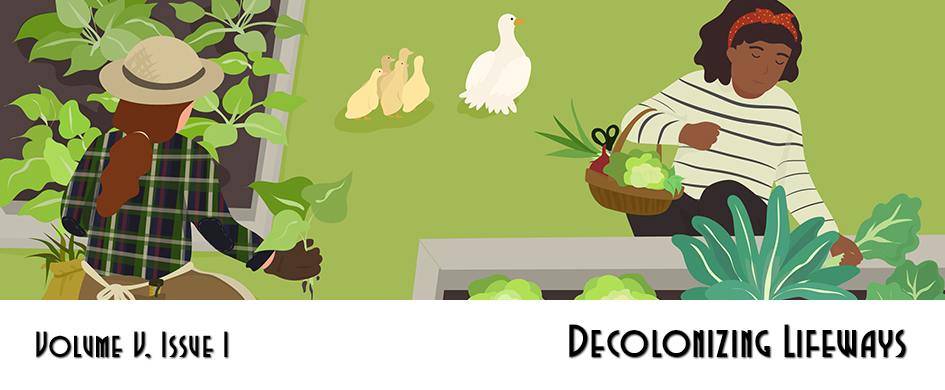Mount View Cedar Glade is an island: a triangle bound by road and residential subdivision. At only nine acres, cars and houses stay seen or heard or both with every step, especially after autumn leaf-fall.
In 1968, this is where Dr. Elsie Quarterman found the Tennessee coneflower (Echinacea tennesseensis), presumed extinct. It’s still here, thanks to her and her student minions, saved with such vigor it was bumped from the Federal endangered list in 2011. I love how it pops up in the drainage ditch across the street. Last year, we saw a homeowner shave it from his mailbox with a weedeater.
If you haven’t seen Tennessee coneflower, I’d tell you to imagine a child’s drawing of a purply-pink daisy, but with narrow petals cocked forward to hug the viewer. The middle—the cone—is a prickly dome of Fibonacci swirls in greenish bronze, sometimes with the tiniest blip of yellow pollen spiked atop an outer row. Stems are adorably hairy. I’d tell you each flower faces roughly east-southeast (we check with a compass), and does not, as you might expect, track the sun across open-skied glade.
To see it properly, come in June and walk a moment through scruffy brush, past cedars and infant oaks to the clearing—the glade, the “waste land”—and there it’ll be, spearing up from limestone gravel as if sown like a crop.
We went today, but in late November coneflowers really do look like weeds, reduced to prickly seedheads: cones on a stick. I molested a single seed out of its puzzle and nibbled it. My mouth needed a reminder how Tennessee coneflower tastes.
Oh, hell.
A botanist once told me the zinc content is what makes my tongue feel like I’ve licked a battery, but I don’t know for sure. Folks don’t seem to go around chewing E. tennesseensis and analyzing the data.
Mount View is a State Natural Area named for the road, which so far has exhibited neither mount nor view. Still, we drive from Nashville for the tiny view in the glade, and to do our bit and pick up trash. We plucked Krystal boxes from reindeer lichen, a Funyuns bag from glade moss. There were Coke cups, Red Bull cans, and one heavy McDonalds sack I did not open, but all the trash is from the road, from the outside in, not from picnics or assignations inside. There is no room for secrecy here. And unlike at larger cedar glades, we never find bullet casings or lead shot. This place is just too small to shoot anything without hitting everything.
The boys wandered: Michael looking down at fossils, Izzy whomping bush honeysuckle with a stick. I found two lanceleaf gumweed flowers still yellow. These plants are so tough I’ve seen them bloom through a bona fide drought, and with the eponymous bead of gum still inside, like a single, sparkly dewdrop. Cedar glades in summer are always droughty with so little soil to hold moisture, but a few summers ago they fried. Not to death. Dry can’t kill a cedar glade. Only people can.
The funny thing is that sometimes glade land looks like it’s already dead. A lot of it is just rock. Great stretches could be an abandoned parking lot or a demolition site, but what you think must be old concrete is limestone a whole lot older—500 million years older—with every chunk, big or small, pebbled with bodies of sea creatures and sculpted by rain.
You’d be surprised what can grow on bare rock, what can shimmy out from cracks, what can root in eddies between shatters of gravel. A mosaic of lichen, liverwort, moss, nostoc, sedum, prickly pear. Native grass and sedge are November seas of khaki and copper. Against these subtle strata, showy flowers are a bonus. Something blooms here nearly every month, even if you have hunt to find it. Glade cress can start at the end of January with white and pink and yellow blooms underfoot in the clackety grit. Three colors but one species, and all smelling like honey: good honey with notes of clover, and not the grocery kind.
Dr. Quarterman carved glade complexes into zones based on depth of soil, starting with Zone 1 with no soil at all, and progressing up to Zone 6 with the twelve inches that can support mature oak and hickory. Each zone, along with its margin, grows particular things and supports particular species. Not particular is the Eastern red cedar (Juniperus virginiana). I’m calling it meta-zonal, although I can’t find the word in dictionaries. Cedar ubiquity names its own haven: the eponymous cedar glade. Teachers will tell you a more accurate term is “limestone glade,” but cedars will win.
Mount View is so small it barely makes it to the deep stuff. But still, it’s a glade, which means it is a “globally rare ecosystem” full of wonders—including endemic species like our Tennessee coneflower—and therefore in need of protection and management. All glades are islands now, ringed by development.
Used to be, no one could build on glade land, not in a big way. Put in trailer homes, yes, but not proper residential or business real estate. Because of the rock. When someone figured how to build septic systems on exposed bedrock and atop infamously unstable karst topography, the game changed. In cedar glades you stand on swiss cheese: caves and underground streams, fissures and sinkholes layered in limestone still eroding with each rain.
I’ve heard that new subdivisions carved from glade land set a parcel aside every now and then, and hold back a numbered lot from sale. Why? A sinkhole awakened by bulldozers.
The coneflower is what saved this little glade. It is a photogenic plant: a proper poster flower to charm the public. It’s a flower you’d want to buy in gallon pots at Walmart. I wonder how big the glade used to be, before development? The hypotenuse of Mount View’s triangle is a new, short, dead-end street named Coneflower Trail. Aerial views show fresh homes tucked tight in kelly green rectangles of sod, and room for maybe 12 more lots, barring sinkholes.
Do Coneflower Trail neighbors know about coneflowers? Do they know the Trail destroyed trails? Do they know their own houses displace that many square feet of rare ecosystem? Do they know a weed-n-feed lawn will never grow glade cress or Nashville breadroot or Tennessee milk vetch or gumweed or even the poster flower for which the street is named? The coneflower isn’t endangered anymore, but its habitat is. Not that I blame residents. They bought land and a tract home fair and square. But I’m glad someone had foresight and grit and budget enough to fence this triangle from its fate as yet another garage-centric, chimney-less, cookie-cutter development.
100 feet from Coneflower Trail today, Izzy cracked a fallen cedar limb. Michael passed it to me to sniff, as usual. That smell. Love is too pale a word. The bark was pale, bleached the same gray as the limestone from which it grew, but the inside split was shocking: bright pink, fuschia, orange in banded waves. Does each color have its own smell?
Aside from cedar needles, most everything else green at Mount View this time of year is bush honeysuckle, English ivy, and privet. Invasive exotics—garden escapees—slowly shade and strangle native plants that make a cedar glade a cedar glade. It needs volunteer teams with weed wrenches and good backs.
We are a volunteer team with grocery bags, and only one of us has a back I’d call good.
Nothing can keep out bush honeysuckle.
Someone, sometime, tried to keep out something here. We were curious about the remains of a low stone wall. It starts from bare earth with just the hint of berm, and leads to the old road. So much rock must have taken weeks to collect and stack, but even at its full height the wall couldn’t have been more than two feet tall, tops. There were six-foot cedar posts—not trees, but anchored, sawn lengths from trees—about four feet apart at the berm end. Why? Were they posts for a gate? The mystery was a nice distraction from the aftershocks of that one coneflower seed. My mouth still tasted of old pennies.
The Tennessee Department of Environment and Conservation description says the land used to be heavily grazed, but I can’t see that piddly wall ever keeping a grazer in or out. There must have been barbed wire, removed when the Nature Conservancy rescued this slice of pie in 1990 or later, when TDEC took over, or whenever the visitor loop was created. Barbed wire—new and vintage—is a common denominator of every state-owned cedar glade we visit. Posts and wire are part of the history of use, a clue to how the land has been called to function by owners: as trash dumps, hunting ground, or in areas with enough dirt to hold grass, thin pasture. The newest wire at Mount View backs backyards of the suburban dead end.
It cuts Coneflower Trail from the coneflower trail.
People still throw trash in cedar glades, people still shoot if there’s room, but nothing grazes at Mount View except small, wild things that can’t be held by fences: turkey, squirrel, songbirds, boys with sticks, nerds with fossils, and the odd naturalist who loves the place so much she needs to eat it.


